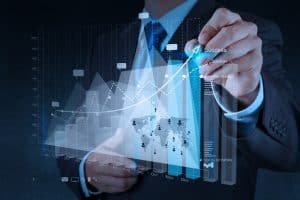Top Statistical Methods Every Data Scientist Should Know
In today’s data-driven world, data scientists play a pivotal role in uncovering insights from vast volumes of information. To succeed in this field, mastering statistical methods is crucial. Statistics helps data scientists interpret, visualize, and model data to make informed decisions. Let’s explore some of the most important statistical methods every data scientist should be familiar with.
1. Descriptive Statistics
Descriptive statistics form the foundation of data analysis. These methods help summarize large datasets, providing an overview of the main features of the data. There are two primary types of descriptive statistics:
- Measures of Central Tendency: consist of the mean (average), median (the middle value), and mode (the value that appears most frequently). They provide a central value that represents the dataset.
- Measures of Dispersion: These include the range, variance, and standard deviation, which indicate the spread or variability of the data.
Descriptive statistics are essential for understanding the basic structure of the data and identifying potential outliers.
2. Probability Distributions
A probability distribution outlines how the values of a random variable are spread out. There are several types of distributions, but the most common ones used in data science are:
- Normal Distribution: Also known as the Gaussian distribution, it’s the most common type, where data points cluster around the mean, creating a bell-shaped curve.
- Binomial Distribution: It’s used for binary or categorical data, such as success or failure, yes or no outcomes.
- Poisson Distribution: This is used for modeling the number of events that occur in a fixed interval of time or space.
Understanding probability distributions is key to predicting future events and drawing conclusions from data.
3. Hypothesis Testing
Hypothesis testing is a crucial method in inferential statistics, used to determine if there’s enough evidence in a sample of data to support a particular hypothesis about the population. The two main steps in hypothesis testing are:
- Null Hypothesis (H₀): This is the assumption that there is no effect or no difference, and it serves as the default assumption.
- Alternative Hypothesis (H₁): This is the claim that there is an effect or a difference.
Common hypothesis tests include:
- t-test: A t-test assesses whether there is a significant difference between the means of two groups.
- ANOVA (Analysis of Variance): Used when comparing the means of three or more groups.
- Chi-square Test: Used to test relationships between categorical variables.
Hypothesis testing helps data scientists validate assumptions and make data-driven decisions.
4. Regression Analysis
Regression analysis is employed to explore the relationships between variables. It allows data scientists to predict the value of one variable based on the values of other variables. There are two main types of regression:
- Linear Regression: This method models the relationship between two variables by fitting a straight line to the data, assuming a linear relationship between the independent and dependent variables.
- Multiple Regression: This extends linear regression to include two or more independent variables. It’s useful when analyzing more complex relationships.
Regression analysis is widely used in various fields such as finance, economics, and machine learning to forecast trends and identify key drivers of outcomes.
5. Bayesian Statistics
Bayesian statistics is a powerful framework that uses probability to quantify uncertainty. Unlike traditional (frequentist) statistics, which rely on fixed parameters, Bayesian statistics incorporates prior knowledge or beliefs to update the probability of a hypothesis as more data becomes available. Key concepts include:
- Bayes’ Theorem: A formula that updates the probability of a hypothesis based on new evidence.
- Prior Probability: The initial probability of an event before new data is considered.
- Posterior Probability: The updated probability after considering new data.
Bayesian methods are highly valuable in areas like machine learning, medical research, and decision-making processes, where uncertainty plays a significant role.
6. Clustering
Clustering is an unsupervised learning technique that groups similar data points based on their characteristics. It’s particularly useful when you need to uncover patterns in data without having predefined labels. Some popular clustering methods include:
- K-Means Clustering: This algorithm divides data into ‘k’ number of clusters based on the closest mean value.
- Hierarchical Clustering: This builds a hierarchy of clusters by either starting with one large cluster and splitting it, or starting with individual data points and merging them.
- DBSCAN (Density-Based Spatial Clustering of Applications with Noise): This groups data based on density, allowing it to find clusters of varying shapes and sizes.
Clustering is often used in customer segmentation, anomaly detection, and image recognition tasks.
7. Principal Component Analysis (PCA)
Principal Component Analysis (PCA) is a dimensionality reduction technique used when you have a dataset with many variables. High-dimensional datasets can be difficult to visualize and analyze, and PCA helps by reducing the number of variables while retaining as much of the original information as possible.
PCA works by identifying the principal components—new variables that are uncorrelated and capture the most variance in the data. This technique is often used in image compression, genomics, and any scenario where simplifying complex datasets is necessary.
8. Time Series Analysis
Time series analysis is used when the data points are collected or recorded over time. It’s particularly relevant in fields like finance, economics, and meteorology. The goal of time series analysis is to detect patterns such as trends and seasonality, and to forecast future data points. Key methods include:
- ARIMA (AutoRegressive Integrated Moving Average): A popular model used to predict future values based on past data.
- Exponential Smoothing: A technique that assigns decreasing weights to past observations in order to forecast future values.
- Seasonal Decomposition: Identifying and separating the seasonal component from the trend and noise in the data.
Time series analysis helps organizations forecast demand, optimize inventory, and monitor performance over time.
9. Resampling Methods
Resampling methods are used to improve the robustness and reliability of statistical models. These techniques involve drawing repeated samples from the data and evaluating models on those samples. Two popular resampling methods are:
- Bootstrapping: This involves repeatedly sampling from the data (with replacement) to estimate the distribution of a statistic.
- Cross-Validation: In this method, the dataset is split into several parts (or “folds”), and the model is trained on some parts and tested on others. This helps evaluate the model’s performance and avoid overfitting.
Resampling is particularly useful when the dataset is small, as it allows for better generalization of the results.
10. A/B Testing
A/B testing is a method used to compare two versions of something (like a webpage or product) to determine which one performs better. It’s widely used in marketing, product design, and web development to optimize user experiences and increase conversion rates.
A/B testing works by splitting users into two groups: one group sees version A, and the other sees version B. Statistical analysis is then applied to determine which version yields better results.
Conclusion
Mastering these statistical methods is crucial for any data scientist. They provide the tools needed to analyze, interpret, and model data in ways that uncover hidden insights and drive impactful decisions. Whether it’s understanding basic descriptive statistics or applying complex machine learning techniques, these methods form the backbone of data science practice.
If you’re looking to advance your skills, you should take a Data Science training course in Delhi, Noida, Lucknow, or other locations across India that are convenient for you. These courses can help you master data science techniques and elevate your career.



